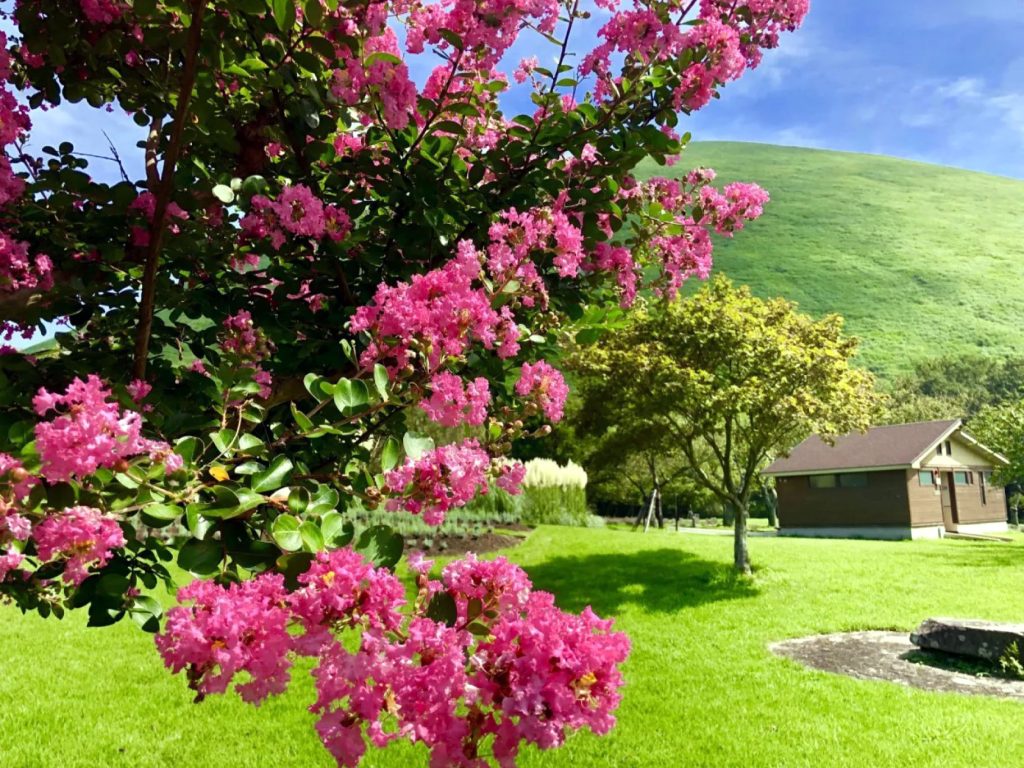
Regardless of scorching heatwaves, the resilient Saru-suberi continues to bloom vigorously. While many flowers wither during the daytime despite blooming in the mornings and evenings, both the Saru-suberi and Kyochikuto (oleander) keep blooming throughout the day. Originally from southern China, they are distributed across tropical regions worldwide. Despite enduring such prolonged hot weather, they continue to bloom just as they did in the past. Whenever I see Saru-suberi during this season, it fills me with a sense of having weathered this summer. Although Saru-suberi is said to have arrived in Japan before the Edo period, it blooms for nearly 100 days, as its alternative name ‘百日紅’ suggests. The name ‘crape myrtle’ in English also derives from the way its petals curl, resembling the texture of summer crape fabric.
猛暑日もなんのその、元気に咲き続けたサルスベリ(百日紅)が今も元気に咲いています。朝晩は咲いても昼間は萎れている花が多いなか、サルスベリとキョウチクトウ(夾竹桃)だけは昼間も咲いていました。中国南部が原産で世界の熱帯各地に分布する[とは言え、猛暑日がこんなに続いても、昔通りに咲いています。いつもこの時期に見るサルスベリを見るたびに、ああこの夏を乗り切ったと言え感慨が湧きます。サルスベリは日本へは江戸時代以前に渡来したと言われていますが、百日紅の別名どおり100日近く咲き続けます。木肌の特徴から付いたサルスベリは日本独特の名称で、その様な意味合いを持った名称は外国にはない様で、花の柔らかさに着目した名称が多い様です。英語名の「crape myrtle」も花弁が夏肌着のクレープのように縮れていることから付いた呼び名です。
